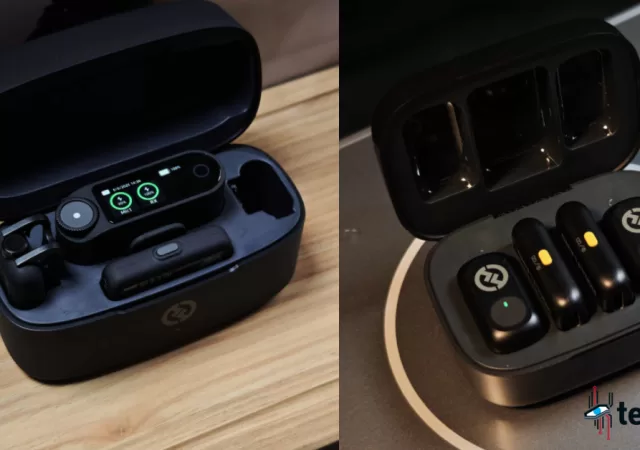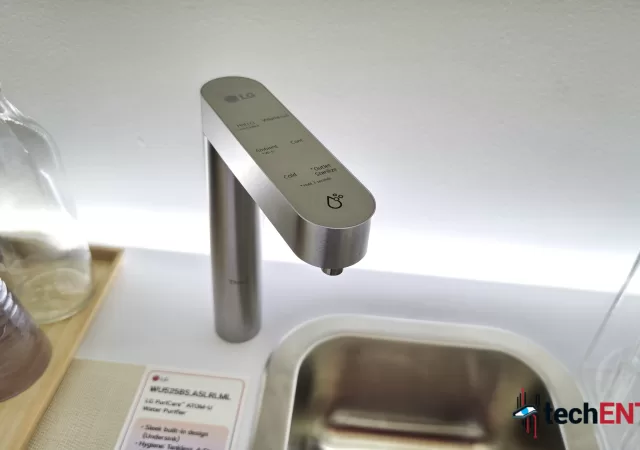Taiwan’s biggest tech exhibition is back for 2021 season, and it is a unique one. Last year COMPUTEX 2020 had to be cancelled because, if you remember correctly, the pandemic situation that is COVID-19 broke out earlier in 2020 and disrupted the entire world. This year, COMPUTEX 2021 is back but without physical presence. It is now fully online.
AMD has been a keen participant of COMPUTEX and they are not going to miss the 2021 season of COMPUTEX. They took the center stage of COMPUTEX this morning, well via YouTube, to launch their latest APUs and Mobile GPUs. They introduced the AMD Ryzen 5600G and AMD Ryzen 5700G APUs and AMD Radeon RX 6600M, AMD Radeon RX 6700M, and AMD Radeon RX 6800M mobile GPUs.
AMD Ryzen 5000G Series
Since the Zen 3 architecture with the AMD Ryzen 5000 series was introduced last year, one of the biggest requests from gamers and enthusiasts was a Zen 3 architecture APU (Accelerated Processing Unit). AMD has answered with the AMD Ryzen 5600G and AMD Ryzen 5700G. Now, you have a choice of building a modern system without a dedicated GPU.
First, the AMD Ryzen 5 5600G. The 5600G is sort of the budget option for builders and gamers. It still features 6 CPU cores like the regular 5600X. Additionally the 5600G packs 7 Radeon VEGA GPU cores within the same die.
Of course, there are some trade-offs to be made with the integrated GPU cores. Boost clock goes up to 4.4 GHz only rather than 4.6GHz. The APU also only has 16MB in L3 cache compared to 32MB.
If you need a little bit more power for the long run, you want the AMD Ryzen 7 5700G. It is sort of comparable to the other Ryzen 7 that is built for desktops, the AMD Ryzen 7 5800X. Both has 8 Zen 3 architecture cores to boot. The 5700G though has 8 more cores than the 5800X in the form of Radeon VEGA graphics cores.
Again, with graphics cores integrated onto the processing die, there are some trade-offs to be made. The maximum boost clock on the 5700G is down to 4.6GHz, from 4.6GHz. The L3 cache is also halved at 16MB compared to 32MB. The benefit of having integrated GPU though would be a blessing to budget constrained builders.
AMD Radeon RX 6000M Series
At COMPUTEX 2021, AMD also introduces their new mobile based GPUs as well – the AMD Radeon RX 6600M, AMD Radeon RX 6700M, and AMD Radeon RX 6800M. If you are wondering what the equivalent competitor’s mobile GPUs are, those would be the NVIDIA GeForce RTX 3060, GeForce RTX 3070, and GeForce RTX 3080. Alongside the AMD Radeon RX 6000M series too, they introduced a sort of guideline of AMD’s version of the ultimate gaming laptop they call the “AMD Advantage”.
The AMD Radeon RX 6600M is the entry-level choice from the AMD Radeon for mobile GPU line-up. You get 28 compute units and 8GB of GDDR6 RAM with clock speeds at 2.1GHz. Going up from there is the Radeon RX 6700M with 36 compute units clocked at 2.3GHz and 10GB of GDDDR6 RAM. The top-of the line Radeon RX 6800M packs 40 compute units clocked at 2.3GHz with 12GB of RAM.
All of the Radeon RX 6000M mobile GPUs comes with RDNA 2 technology, of course. They also brought AMD’s Smart Access Memory, or resizable bar in more common terms to the mobile computing market with the introduction of the Radeon RX 6000M series. They also introduced the AMD Radeon Chill technology with the mobile GPUs alongside AMD FidelityFX for all AMD based system, even if they are running a non-AMD GPU platform.
AMD Radeon Chill
AMD Radeon Chill is a clever technology that is supposed to minimise a problem that has been plaguing gaming laptops forever. AMD says that it is a power-regulation technology that is supposed to extend the battery life of a gaming laptop without sacrificing too much performance. At the same time AMD’s SmartShift technology also regulates power power consumption and processing power between the CPU and GPU to always optimise gaming and productivity performance.
AMD FidelityFX
At the same time, there is AMD FidelityFX technology that upscales your games from a lower resolution to a higher one. If it sounds familiar to another competitor technology, it is because they are basically the same things. But there is some good in upscaling contents, despite not getting all the high-definition detail. You get more performance out of your system at least. The best news is that it is coming to all AMD based systems. It even works on older non-AMD GPUs if you want it to.
AMD Advantage Design
AMD also introduced the AMD Advantage framework for gaming laptops fully based on the AMD processors. They introduced ASUS’ ROG Strix G15/G17 and HP Omen 15 alongside the announcement too.
AMD Advantage outlines the guidelines of what an AMD gaming laptop should work like. For example, the minimum requirement for an AMD Advantage certified laptop is featuring a display with at least 144Hz in refresh rate. Display has to be either an IPS or OLED display that can push above 300nits in brightness. They also are required to last more than 10 hours when you watch movies as well. To ensure smooth and fast operation, and AMD Advantage laptop has to have at least one NVMe PCIe Gen3 M.2 SSD. Of course, they have to pack an AMD Ryzen processor with an AMD Radeon RX GPU.
The first AMD Advantage Gaming laptops are expected to come as early as June 2021. For more information on AMD’s new APUs and mobile GPUs, you can head over to AMD’s website.






